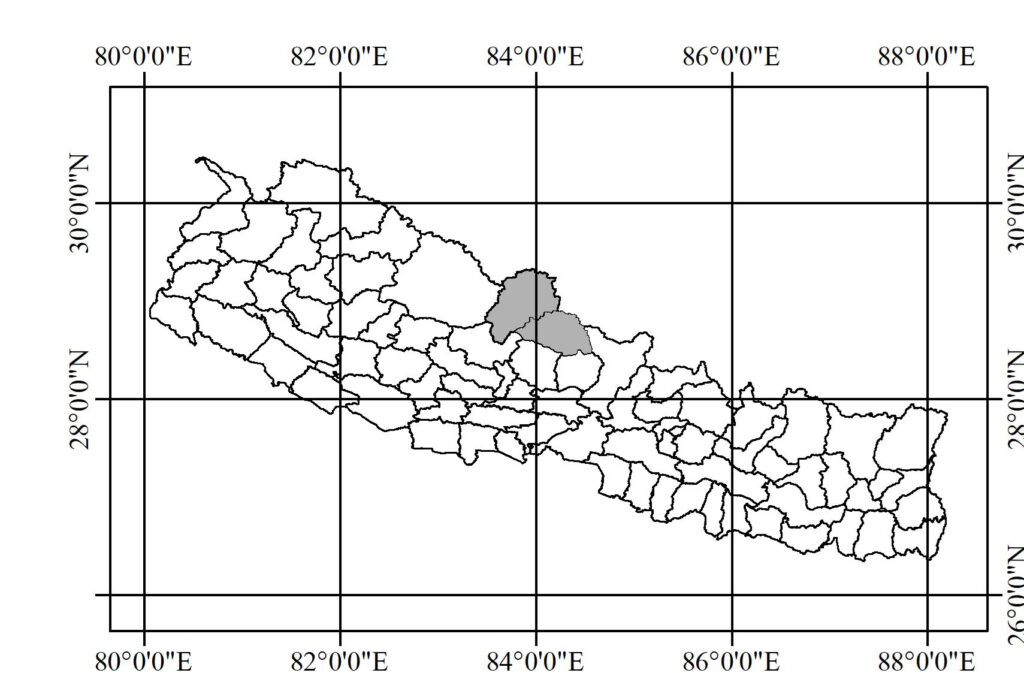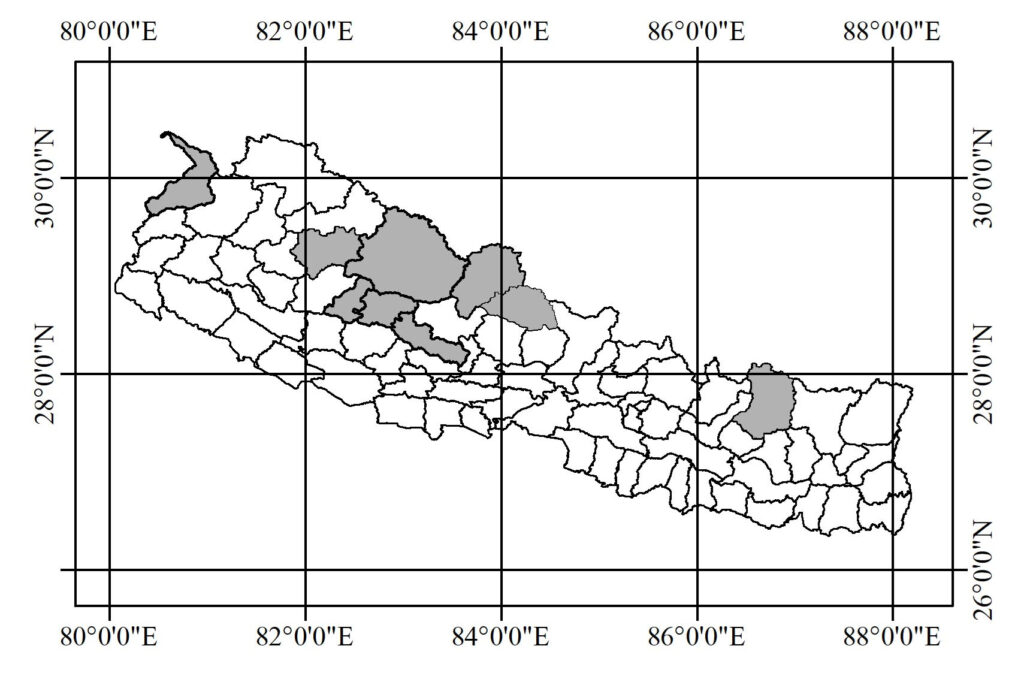Triglochin Riv. ex L., Sp. Pl.1: 338 (1753).
Taxon Description
Perennial marshy herbs. Rhizomes horizontal, short, thick and stout. Leaves basal, sessile, linear, fleshy, flat or somewhat terete, ligulate, sheathing at the base of scapes. Inflorescence scapose, spike-like, ebracteate raceme; leafless scapes erect, shorter or longer than leaves, scarcely elongating after flowering. Flowers bisexual, 3-merous. Perianth segments 6, in 2 series. Stamens 6; anthers ovate, didymous, nearly sessile. Ovary rounded; carpels 6, all fertile or 3 fertile and 3 sterile, connate; ovule 1 per locule. Fruit a schizocarp with 1-seeded mericarps evenly attached along their length or remaining united at the top and spreading out below.
Taxon Statistics
Worldwide 25 species, cosmopolitan. Two species in Nepal.
Key to Species
1a Inflorescence dense. Fertile carpels 6. Fruit oblong, base rounded; mericarps evenly attached ……………………………………………………………………………………. 1. T. maritima
b Inflorescence lax. Fertile carpels 3. Fruit club-shaped, base tapered; mericarps remaining united at the top and spreading out below ………………….……… 2. T. palustris
1. Triglochin maritima L., Sp. Pl. 1: 339 (1753).
Hexaglochin maritima (L.) Nieuwl.; Juncago maritima (L.) Bubani.
Marshy perennial herbs, 4–19(–58) cm. Rhizomes short, thick, encased with sheaths of old leaves at base. Leaves basal, linear, thick, mostly shorter but sometimes slightly longer than scapes, ligulate; ligules apically two lobed, 2–6 mm; blade flat, slightly more flattened towards the apex, 3–13(–21) cm X 2–5 mm, margin entire, apex obtuse. Racemes ebracteate, scarcely elongates after flowering, 2–6(–22) cm, compactly arranged flowers on erect scapes. Scapes long, terete, smooth, hollow, 3–11(–27) cm, pedicel ascending, 2–4 mm. Perianth segments 6, green, 2 mm. Stamens 6, with almost sessile globose anthers. Carpels 6, all fertile; ovaries rounded, one chambered containing a single ovule. Fruit a schizocarp, ascending, not appressed to scape, oblong-ovoid, 3–5 mm X 2–3 mm, rounded at base, beak erect to recurved, smooth or weak ridged, each mericarp 1-seeded.
Distribution: Nepal, W Himalaya, E Himalaya, Tibetan Plateau, E Asia, N Asia, C Asia, SW Asia; Europe, NW Africa, N America and S America.

Altitudinal range: 2500–4600 m.
Ecology: Marshy place along ponds or streams, wet meadows or other moist places.
Flowering: June–August. Fruiting: September–October.
Plants are toxic as it produces cyanide and regarded as Stock poisoning plant (Fleming and Miller, 1920).
2. Triglochin palustris L., Sp. Pl.: 338 (1753).
Marshy perennial herbs, 3–25(–58) cm. Rhizomes short, thick, encased with sheaths of old leaves at base. Leaves basal, linear, thick, mostly longer but sometimes slightly shorter than scapes, ligulate; ligules apically entire, 1–2 mm; blade subulate, (2–) 6–25 cm X 1–2 mm, margin entire, apex acute. Racemes ebracteate, scarcely elongates after flowering, 3–27(–35) cm, loosely arranged flowers on erect scapes. Scapes long, semi-terete, smooth, hollow, (4–)5–27 cm, pedicel mostly erect but sometimes ascending, 2–7 mm. Perianth segment 6, purplish green, 2 mm. Stamens 6, with almost sessile globose anthers. Carpels 6, only 3 fertile; ovaries rounded, one chambered containing a single ovule. Fruit remain united at the top and spread out at the base rather than totally separating at maturity, ascending, closely appressed to scape, club-shaped, 3–7 mm X 2 mm, tapering at base, beak erect, weakly ridged, each mericarp 1-seeded.
Distribution: Nepal, W Himalaya, E Himalaya, Tibetan Plateau, Assam-Burma, S Asia, E Asia, N Asia, C Asia, SW Asia; Europe, NW Africa, N America and S America.

Altitudinal range: 2300–4700 m.
Ecology: Marshy place near streamlet, wet meadows and other moist or muddy places.
Flowering: June–August. Fruiting: September–October.
Stem and seeds used as food.
